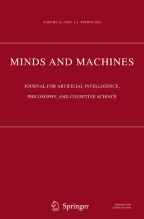Abstract
Although activity aimed at the construction of artificial intelligence started about 60 years ago however, contemporary intelligent systems are effective in very narrow domains only. One of the reasons for this situation appears to be serious problems in the theory of intelligence. Intelligence is a characteristic of goal-directed systems and two classes of goal-directed systems can be derived from observations on animals and humans, one class is systems with innately and jointly determined goals and means. The other class contains systems that are able to construct arbitrary goals and means. It is suggested that the classes (that implicitly underlie most models of artificial intelligence) are insufficient to explain human goal-directed activity. A broader approach to goal-directed systems is considered. This approach suggests that humans are goal-directed systems that jointly synthesize arbitrary goals and means. Neural and psychological data favoring this hypothesis and its experimental validation are considered. A simple computer model based on the idea of joint synthesis to simulate goal-directed activity is presented. The usage of the idea of joint synthesis for the construction of artificial intelligence is discussed.
Similar content being viewed by others
Explore related subjects
Discover the latest articles, news and stories from top researchers in related subjects.References
Asaad, W. F., Rainer, G., & Miller, E. K. (2000). Task-specific neural activity in the primate prefrontal cortex. Journal of Neurophysiology, 84, 451–459.
Bäck, T. (1996). Evolutionary algorithms in theory and practice: Evolution strategies, evolutionary programming, genetic algorithms. Oxford: Oxford University Press.
Batuev, A. S. (1981). High integrative systems of the brain. Moscow: Nauka. (in Russian).
Bertino, E., Piero, G., & Zarria, B. C. (2001). Intelligent database systems. Reading: Addison-Wesley Professional.
Buller, D. J. (1998) DeFreuding evolutionary psychology: Adaptation and human motivation. In Hardcastle, V. G. (Ed.), Psychology meets biology: Connections, conjectures, constraints. MIT Press/Bradford Books. http://cogprints.soton.ac.uk/documents/disk0/00/00/03/26/cog00000326-00/defreud.htm.
Cooper, R. P., & Shallice, T. (1995). Soar and the case for unified theories of cognition. Cognition, 55(2), 115–149.
Corkill, D. D. (1991). Blackboard systems. AI Expert, 6(9), 40–47.
Corsini, R. J., & Auerbach, A. J. (1998). Concise encyclopedia of psychology. Wiley.
Craig, I. (1995). Blackboard systems (Tutorial monographs in artificial intelligence series). Ablex Publishing Corporation.
Evans, J. S. B. T. (2003). In two minds: Dual-process accounts of reasoning. Trends in Cognitive Sciences, 10, 454–459.
Fuster, J. M. (1997). Network memory. Trends Neuroscience, 20, 451–459.
Haykin, S. (1998). Neural networks: A comprehensive foundation. Prentice Hall, Englewood cliffs.
Heckhausen, H. (1980). Motivation und Handeln. Verlag: Springer.
Holland, J. H. (1975). Adaptation in natural and artificial systems. Ann Arbor: University of Michigan Press.
Jackson, P. (1998). Introduction to expert systems (3rd ed.). Addison Wesley.
Joseph, R. (1999). Frontal lobe psychopathology: Mania, depression, confabulation, catatonia, perseveration, obsessive compulsions, and schizophrenia. Psychiatry, 62(2), 138–172.
Leslie, K. P., Littman, M. L., & Moore, A. W. (1996). Reinforcement learning: A survey. Journal of Artificial Intelligence Research., 4, 237–285.
Luria, A. R. (1966). Higher cortical functions in man. Andover, Hants: Tavistock. Publications.
Miller, E. K., & Cohen, J. D. (2001). An integrative theory of prefrontal cortex function. Annual Review Neuroscience, 24, 167–202.
Miller, B. T., & D’Esposito, M. (2005). Searching for “the top” in top-down control. Neuron, 48, 535–538.
Newell, A. (1990). Unified theories of cognition. Cambridge, MA: Harvard.
Rodina, O. N., & Prudkov, P. N. (2005). The principle of joint synthesis in purposeful processes. MGU Bulletin Psychology, 2, 77–86. (in Russian).
Russell, S. J., & Norvig, P. (2003). Artificial intelligence: A modern approach. Upper Saddle River, NJ: Prentice Hall.
Stanovich, K. E., & West, R. F. (2000). Individual differences in reasoning: Implications for the rationality debate. Behavioral and Brain Sciences, 23, 645–726.
Sutton, R. S. & Barto, A.G. (1998). Reinforcement learning: An introduction. Cambridge, MA: MIT Press.
Tooby, J., & Cosmides, L. (1992). The psychological foundations of culture. In J. H. Barkow, L. Cosmides, & J. Tooby (Eds.), The adapted mind: Evolutionary psychology and the generation of culture (pp. 19–136). NY: Oxford University Press.
Tooby, J., Cosmides, L., & Barrett, H. C. (2005). Resolving the debate on innate ideas: Learnability constraints and the evolved interpenetration of motivational and conceptual functions. In P. Carruthers, S. Laurence, & S. Stich (Eds.), The innate mind: Structure and content. NY: Oxford University Press.
Van der Velde, F., & de Kamps, M. (2003). A model of visual working memory in PFC. Neurocomputing, 52–54, 419–424.
Van der Velde, F., & de Kamps, M. (2006). Neural blackboard architectures of combinatorial structures in cognition. Behavioral and Brain Sciences, 29, 37–70.
von Bertalanffy, L. (1968). General systems theory: Foundation, development, applications. New York: Brazillier.
Wood, J. N., & Grafman, J. (2003). Human prefrontal cortex: Processing and representational perspectives. Nature Review Neuroscience, 4, 139–147.
Author information
Authors and Affiliations
Corresponding author
Appendix
Appendix
p1 = 1; p4 = 2; p5 = 0.3; p6 = 0.98; p7 = 0.5; p8 = 0.3; p9 = 0.8; p10 = 0.8, noise = a random number from 0 to 1.1.
Rights and permissions
About this article
Cite this article
Prudkov, P.N. A View on Human Goal-Directed Activity and the Construction of Artificial Intelligence. Minds & Machines 20, 363–383 (2010). https://doi.org/10.1007/s11023-010-9218-7
Received:
Accepted:
Published:
Issue Date:
DOI: https://doi.org/10.1007/s11023-010-9218-7
